Japanese Slow Living at Home: 8 Calming Steps to Simplicity
Do you ever feel like your days are just a blur of tasks and notifications? You’re not alone.
In a world that’s constantly pushing for more, more productivity, more hustle, more speed, it’s easy to feel overwhelmed. That’s where Japanese slow living comes in. It’s not about doing nothing, but rather about doing everything with intention, peace and mindfulness.
If you’ve searched for how to practice Japanese slow living at home, you’re probably looking for a way to simplify your life, reduce stress and find more joy in the everyday hustle. This article will guide you through the philosophy, principles and practical steps to bring the calm and elegance of Japanese slow living into your own home.
Also read – How to Fall in Love With Fitness & Find True Inner Happiness
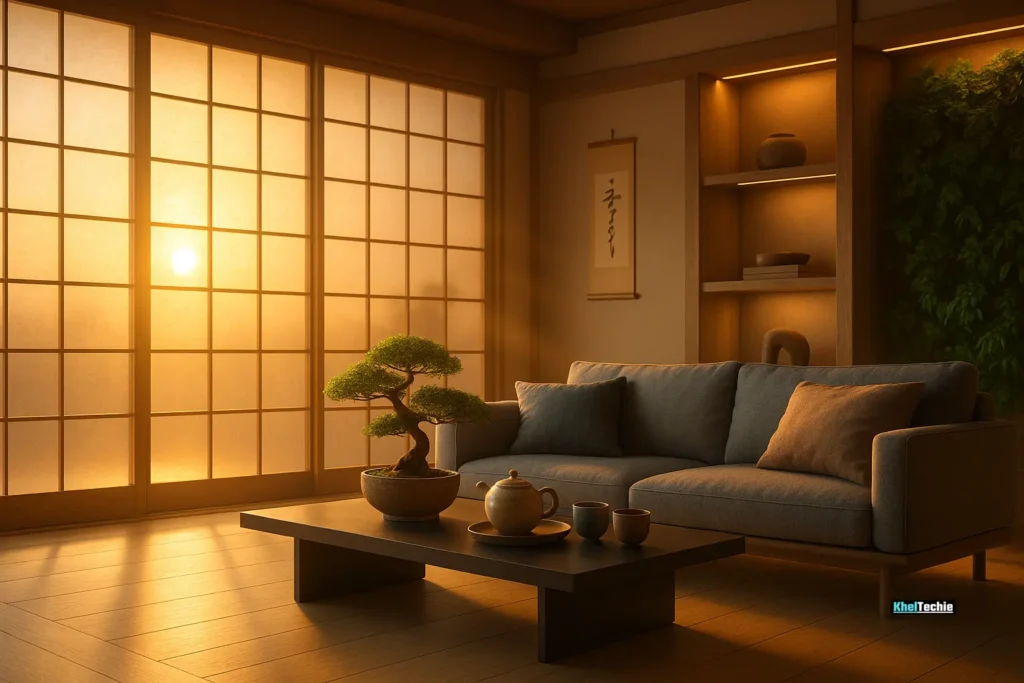
What is Japanese Slow Living at Home?
Japanese slow living is a lifestyle rooted in mindfulness, simplicity and appreciation for the present. Unlike fast-paced Western cultures that often equate success with busyness, Japanese slow living encourages you to slow down, savor moments and live with purpose.
Think of it like this: instead of rushing through your morning coffee while checking emails, you sit quietly, feel the warmth of the cup, and truly taste your drink. It’s about presence, not productivity.
At its heart, Japanese slow living draws inspiration from concepts like:
- Wabi-sabi → Finding beauty in imperfection and impermanence.
- Shibumi → Quiet elegance and understated beauty.
- Ma → The meaningful spaces between things, or the pause between actions.
- ikigai → purposeful living
Think of it as pressing pause on life’s chaos and sinking into the soft rhythm of everyday rituals. Slow living is not about doing less, it’s about making space for what matters most.

Why Practicing Japanese Slow Living at Home Matters in 2025
In a world sprinting towards speed and excess, Japanese slow living stands out as the art of savoring simplicity and it’s gaining even deeper importance in 2025. This philosophy isn’t about doing less, it’s about making each moment thoughtful, deliberate and valuable. So have you ever noticed how just pausing to appreciate nature, even for a few minutes can instantly calm your mind? That’s the magic of Japanese slow living. Below facts show why this mindset is more than a trendy lifestyle choice, it’s a proven path to wellness.
First, a May 2025 study had participants quietly observing a tranquil Japanese garden. In just seven minutes, their heart rates dropped by 4%, and their eye movements showed patterns typical of deep relaxation techniques like EMDR . Imagine experiencing that calm while sipping tea in your living room, surrounded by simple, thoughtful décor. You get a taste of that garden’s therapeutic effect without even stepping outside.
Then there’s Shinrin‑Yoku, the famed “forest bathing.” Recent research (including a 2022 meta-analysis and studies in 2024) confirms what Japanese culture has long embraced: time in nature boosts your mood and energy, eases stress and depression, improves sleep, reduces inflammation and even keeps weight in check.
These aren’t just nice-to-haves. They show that using slow living techniques like viewing a mini garden, opening a window to natural scenery, bringing a plant indoors or taking a mindful walk can give your well-being a solid, science-backed boost. In short, Japanese slow living isn’t fluff, it’s your ticket to real measurable calm. It helps you dial down racing thoughts, sleep better and feel more grounded, with just gentle, nature-inspired habits woven into your daily routine. Why not start with a small indoor garden, a ritual cup of tea, or a few minutes of mindful breathing each day? Your heart and mind will thank you.
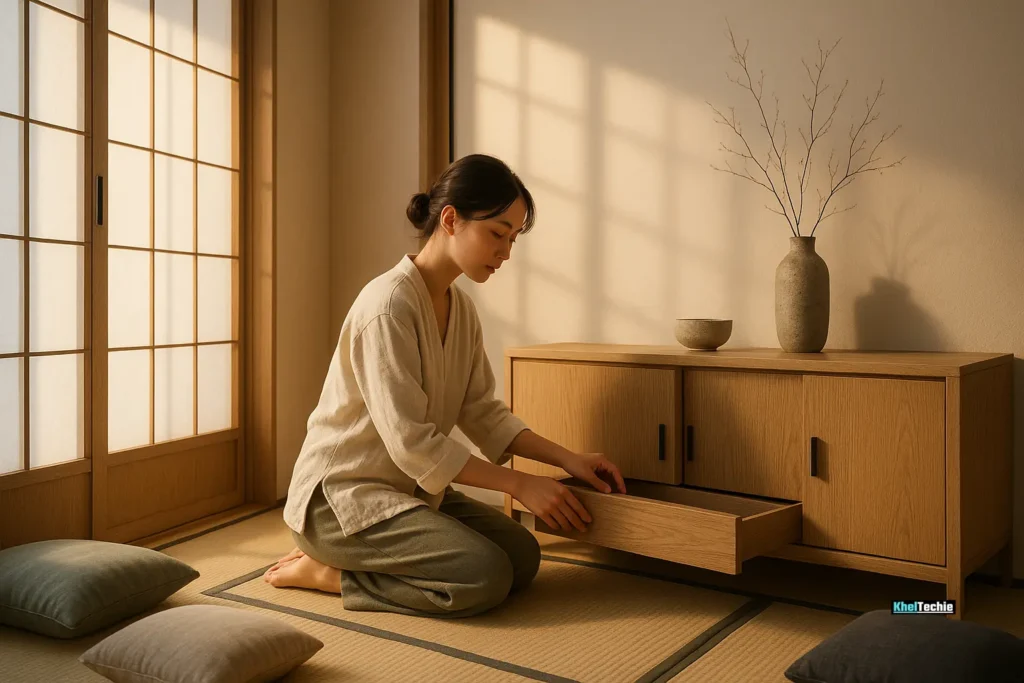
How to Practice Japanese Slow Living at Home
Ready to bring Japanese slow living into your home? Here’s exactly how.
Step 1: Declutter Your Space the Japanese Way
Ever heard of Danshari? This Japanese philosophy translates roughly to “refuse, dispose, separate.” It’s a mindful form of minimalism.
How to do it:
- Tackle one room at a time.
- Hold each item and ask:
- Does this bring me joy or calm?
- Do I truly need this?
- Donate or recycle items that no longer serve you.
- Keep surfaces clear for mental clarity.
A clutter-free space invites peace, as they say “Tidying is the act of confronting yourself.”
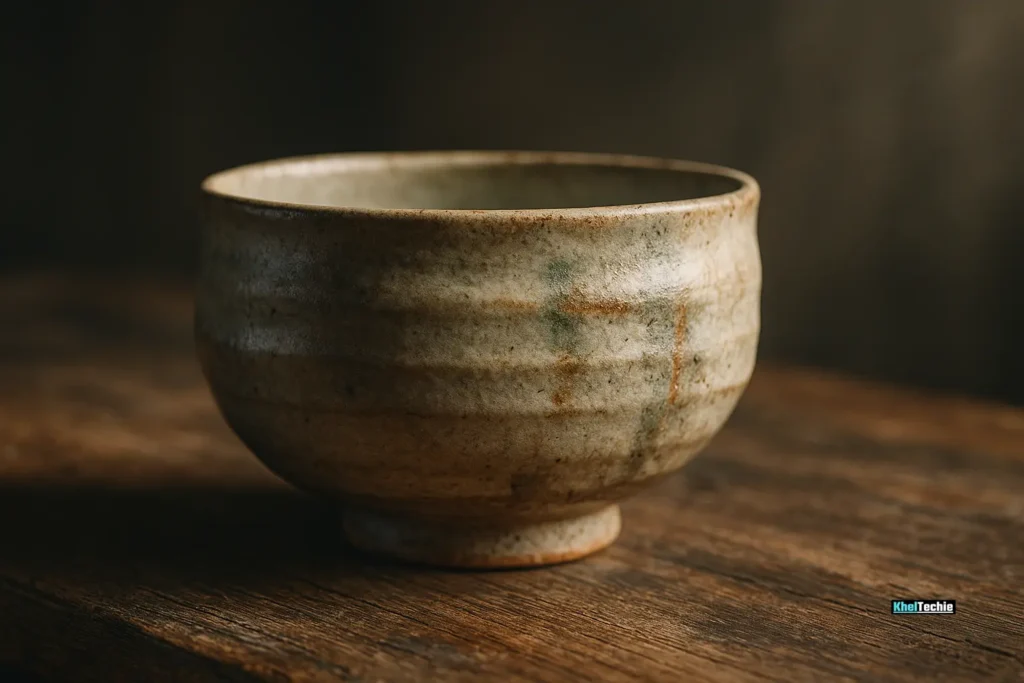
Step 2: Embrace Wabi-Sabi Aesthetics
Perfection is overrated. Wabi-sabi teaches that imperfection and age hold beauty.
Considerations:
- Use natural materials (wood, linen, stone).
- Choose handmade ceramics with unique flaws.
- Keep décor simple and earthy.
- Leave some empty spaces in rooms for “Ma” = the beauty of nothingness.
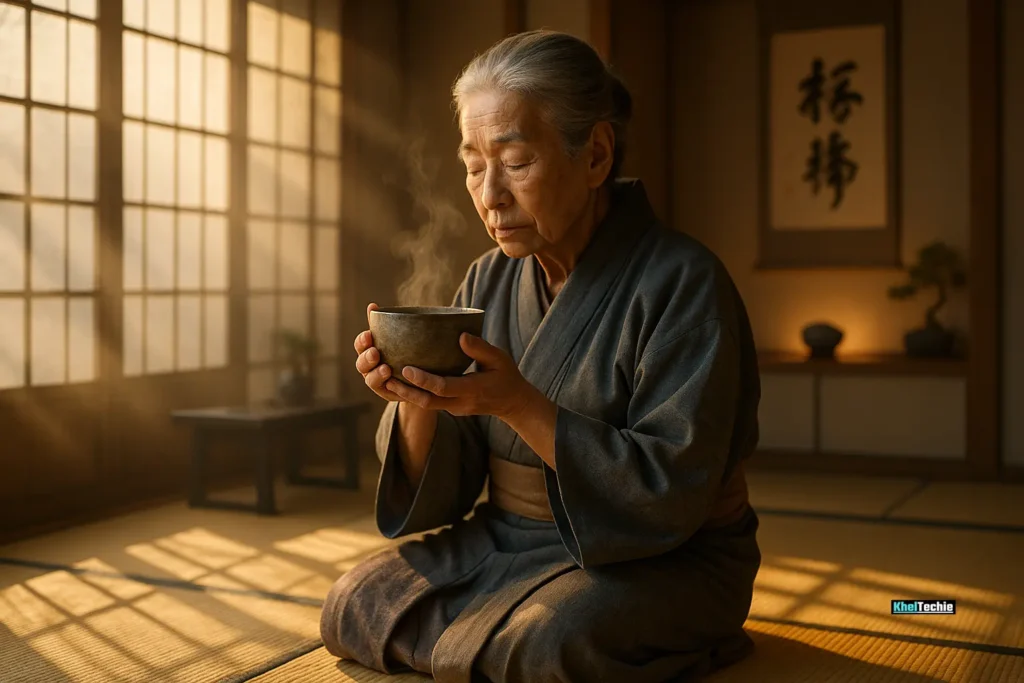
Step 3: Adopt the Concept of Ikigai & Create Daily Rituals
Ikigai means reason for being or purposeful living. It’s the intersection of what you love, what you’re good at, what the world needs and what you can be paid for. Japanese slow living isn’t just about how your house looks, it’s about how you live in it.
Ideas for rituals:
- Brew tea slowly and mindfully.
- Arrange fresh flowers (Ikebana).
- Light incense in the morning.
- Read poetry in silence.
- Practice calligraphy or simple brush painting.
Even washing dishes can become a soothing ritual if done mindfully.
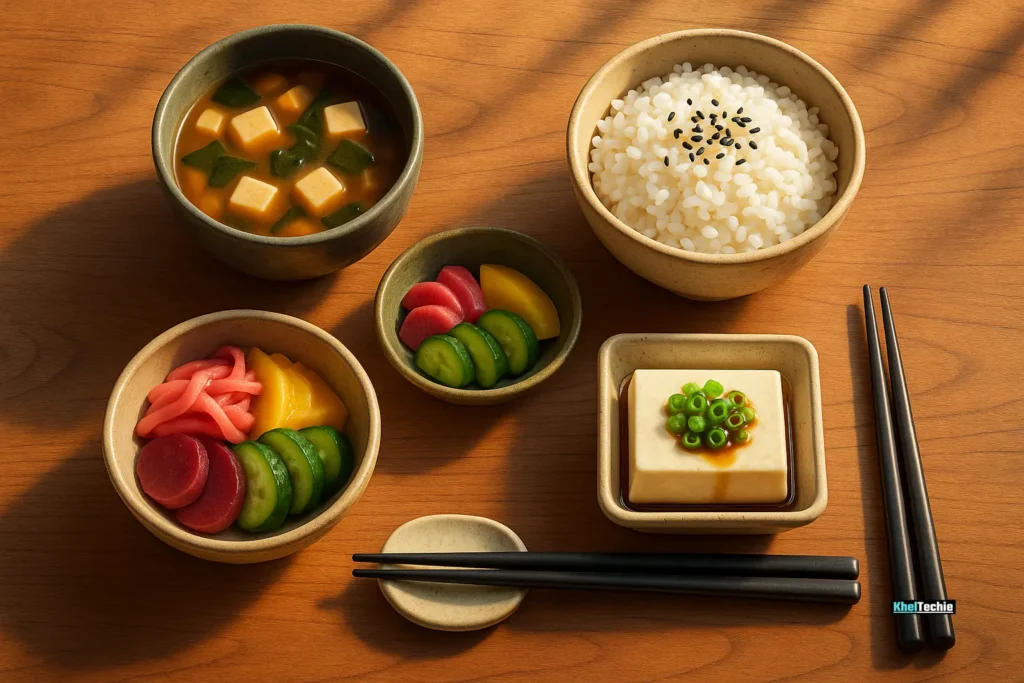
Step 4: Cook Japanese-Inspired Simple Meals
Japanese cuisine celebrates seasonal, simple ingredients.
Consider Trying:
- Miso soup with fresh vegetables.
- Simple rice dishes like ochazuke (rice with tea).
- Steamed fish or tofu.
- Matcha green tea preparation.
Slow cooking connects you with the food you eat.
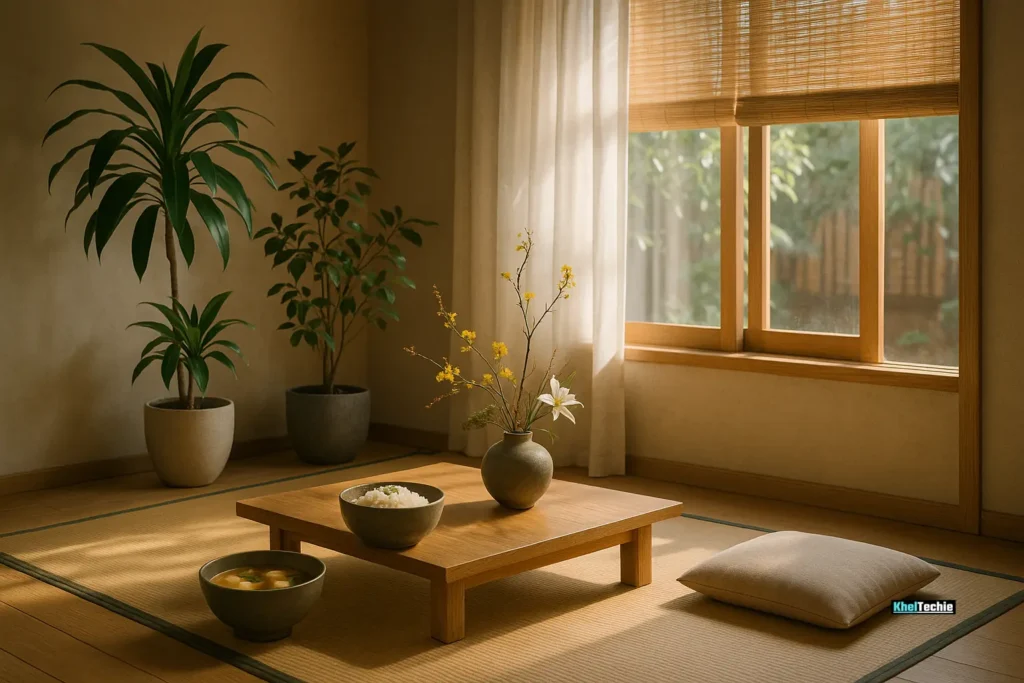
Step 5: Incorporate Nature Indoors
Japanese homes blur the lines between indoors and nature.
How to do it:
- Place potted plants strategically.
- Open windows for fresh air.
- Use bamboo shades to filter soft light.
- Display seasonal branches or stones collected on a walk.
Studies show that even small natural elements lower anxiety
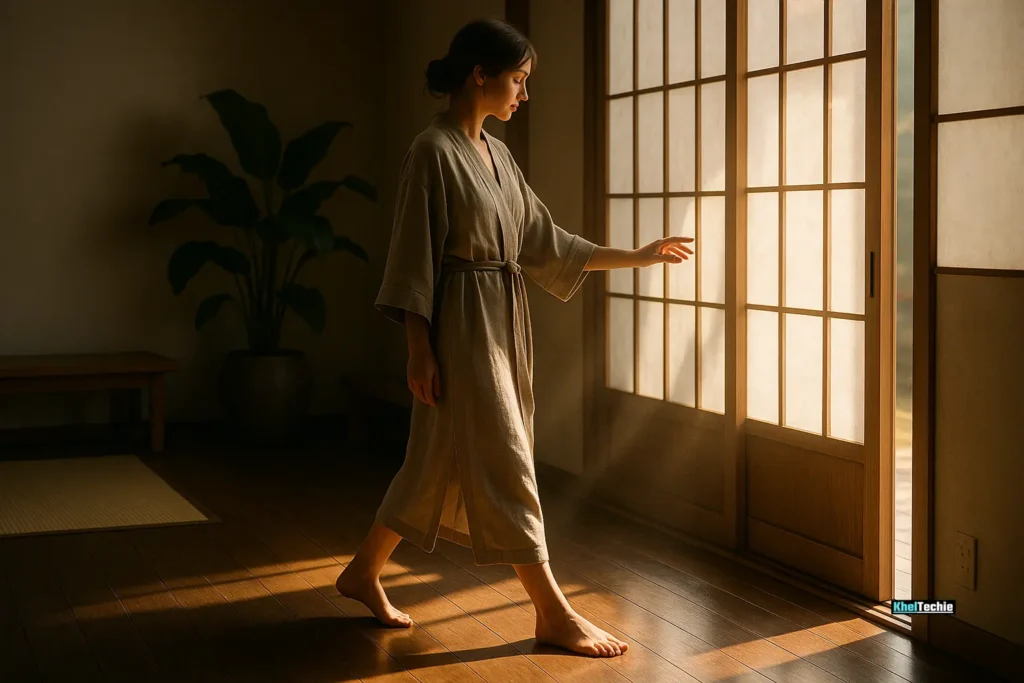
Step 6: Slow Down Your Pace
Japanese slow living invites you to do things at half your usual speed.
- Eat meals without screens.
- Walk slowly around your home.
- Speak gently.
- Pause before moving to your next task.
It’s astonishing how much more peaceful your day feels when you stop rushing.
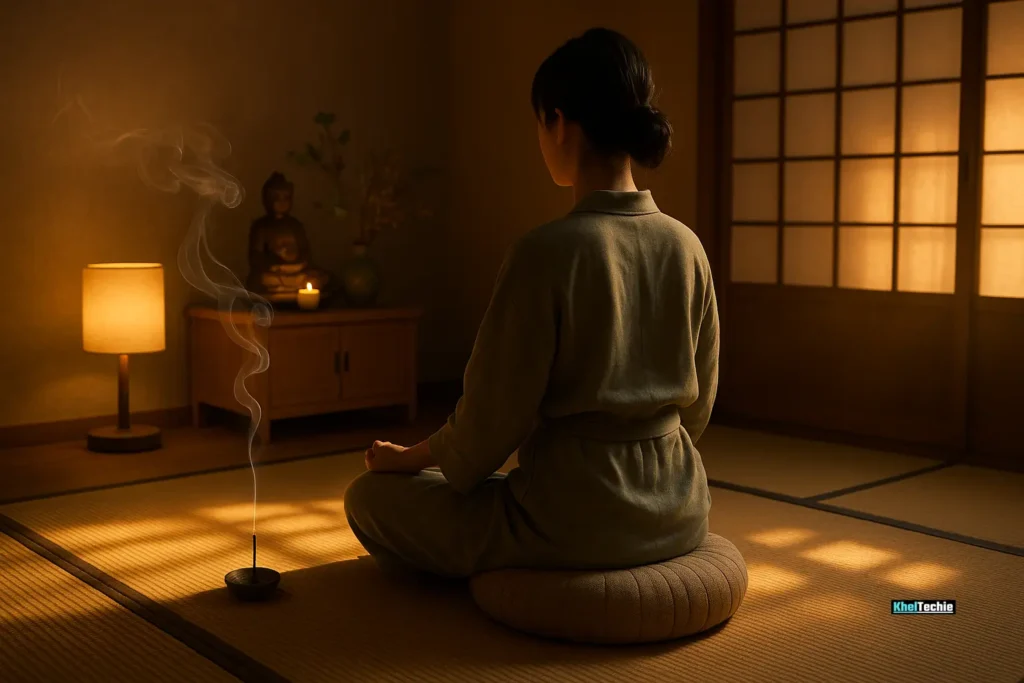
Step 7: Practice Mindfulness Techniques
Japanese traditions are rich with mindfulness practices.
Consider Trying:
- Zazen meditation (just sit and breathe).
- Writing haiku poetry.
- Mindful gardening.
- Quiet tea ceremonies.
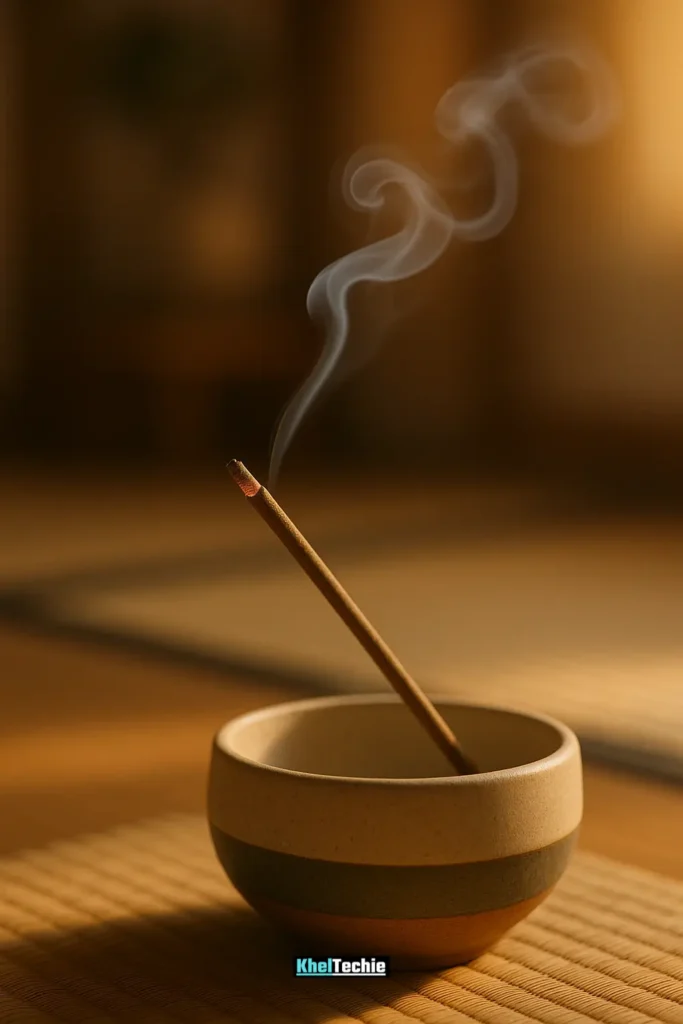
Step 8: Use Scent to Set the Mood
Scents deeply affect our minds.
- Burn sandalwood incense.
- Use essential oils like hinoki (Japanese cypress).
- Keep natural soaps for washing hands.
A subtle fragrance can transform your space into a sanctuary.

Common Mistakes to Avoid When Practicing Japanese Slow Living
Even with the best intentions, it’s easy to fall into traps. Here are the most common mistakes people make:
| Mistake | Why It Happens | How to Fix It |
|---|---|---|
| Rushing through decluttering | Wanting instant results | Go slow, reflect on each item |
| Over-Consuming “Minimalist” Products | Confusing minimalism with consumerism | Focus on intention, not aesthetics |
| Overplanning routines | Trying to force slow living | Let go of rigid schedules |
| Ignoring cultural roots | Practicing without understanding | Learn the philosophy behind the practices |
| Forcing family to join | Trying to change others | Lead by example and invite gently |
Also read – How to Start a Gratitude Journal in 2025 for Mental Wellness & Joy
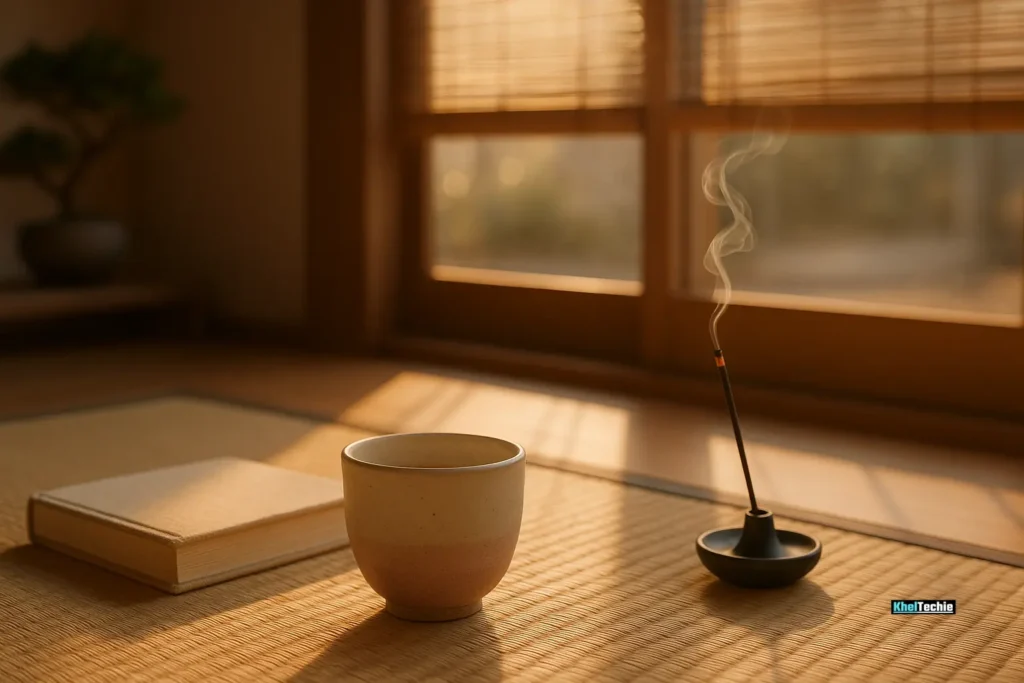
Final Thoughts: The Unique Value of Practicing Japanese Slow Living at Home
Practicing Japanese slow living at home isn’t about perfection, it’s about presence. It’s about choosing to live with intention, savoring small moments and creating a space that supports your well-being. Remember, You don’t need to overhaul your entire life overnight, just start with one mindful habit, one decluttered drawer or one quiet moment with your tea. That’s where the magic begins.
Have you tried Japanese slow living at home? What’s your favorite way to slow down? Share your thoughts in the comments below or tag us on social media with your slow living moments. Let’s make slow living not just a trend but a way of life. 🌿
This article is for informational and lifestyle inspiration purposes only. It does not offer medical, psychological, or therapeutic advice. Always consult a qualified professional before making any significant changes to your mental health practices, diet, or daily routines. The content reflects general principles of Japanese slow living and may not be suitable for everyone.
FAQs: Everything You Need to Know About Japanese Slow Living at Home
What is the Japanese word for slow living?
There’s no single word, but phrases like Danshari (decluttering), Wabi-sabi (imperfection), and Ma (space) all contribute to the idea of slow living.
What is the difference between Japanese slow living and minimalism?
While minimalism focuses on reducing physical possessions, Japanese slow living emphasizes mindfulness, presence, and harmony with nature. It’s more holistic and less focused on aesthetics alone.
How do I start if I’m new to this lifestyle?
Begin with one small habit: a morning tea ritual, a gratitude journal, or a weekly decluttering session. Build from there.
Can I practice Japanese slow living if I live in a small apartment?
Absolutely! Japanese slow living thrives in small spaces. Use multi-functional furniture, natural light, and intentional decor to create a peaceful environment.
How can I involve my family?
Start by sharing your intentions and leading by example. Create shared routines like family meals or quiet evenings without screens.
Is Japanese slow living expensive?
No. In fact, it encourages mindful consumption and reducing waste, which can save money in the long run.
Where can I find authentic Japanese slow living resources?
Check out blogs like Zen Habits or follow Japanese lifestyle influencers on Instagram and YouTube.
Can I still work full-time and practice slow living?
Yes. Slow living is about quality over quantity. You can incorporate small moments of mindfulness and intentionality throughout your day.
Do I need to meditate to practice slow living?
Meditation is helpful but not required. You can practice mindfulness through cooking, walking, or even folding laundry with full attention.
Why do Japanese people value slow living?
Japan’s traditional culture prizes harmony, mindfulness, and connection to nature—values at the core of slow living.
What books should I read to learn more about Japanese slow living?
The Book of Ichigo Ichie by Héctor García and Francesc Miralles
Wabi-Sabi for Artists, Designers, Poets & Philosophers by Leonard Koren
Ikigai: The Japanese Secret to a Long and Happy Life

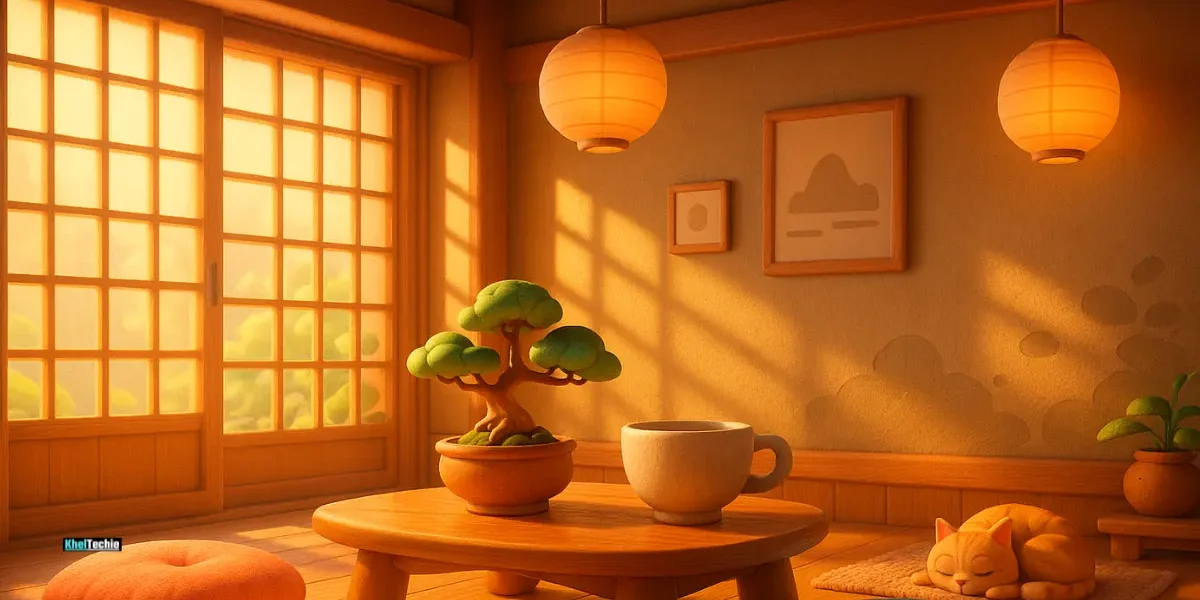



Pingback: Japanese Journaling For Mindfulness: Simple Beginner's Guide